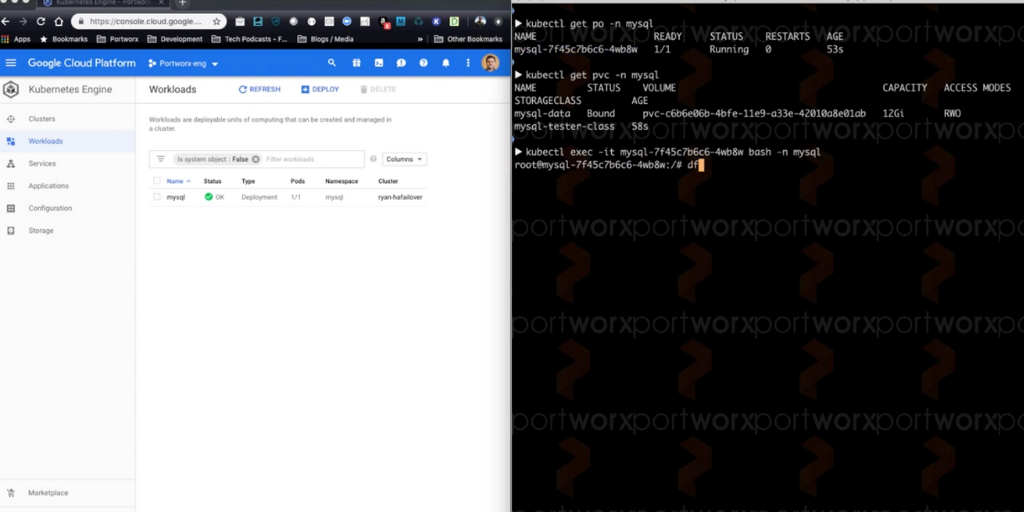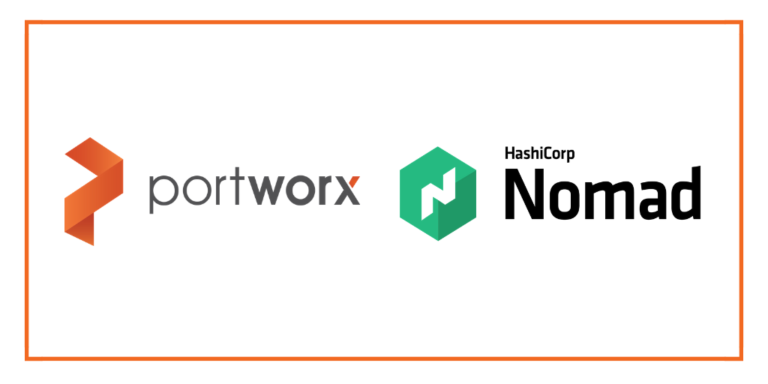
This is the initial release of educational series which will provide content through lightboarding. Through this unique way of learning, we will provide short, concise, easy to understand videos for viewers. We’re hoping it helps readers learn and answer their questions about Portworx. Viewers will be able to get up to speed on Portworx as a whole or perhaps learn about a specific feature. This series will be an ongoing series from Portworx so make sure to check our youtube channel in the future for more.
Let’s dig into the lightboard videos available as of this blog post.
Why Portworx?
In this short video, we will explain the Portworx value proposition along with some of the differentiating features such as data mobility, application awareness and infrastructure independence.
Resources related to this video that you can check out can be found below.
Portworx 101 (Overview)
In this video, learn the basics of Portworx and how it can enable your stateful workloads. We will discuss the largest fragments of the Portworx the platform and how it creates a global namespace to enable virtual volumes for containers.
Resources you can check out related to this topic.
Understanding Storage Pools
In this video, learn how Portworx achieves mobility for applications by dynamically managing pools of storage across a cluster of nodes. We’ll show how Portworx pools clusters of infrastructure together into classified storage resource pools for applications.
Resources you can check out related to this topic.
Deployment Modes (Hyperconverged, Disaggregated)
With this video you will learn how Portworx deploys it’s full stack of software in a linux container. In this short video you will learn the two main deployment modes in which Portworx can be installed on your infrastructure.
Resources you can check out related to this topic.
- https://docs.portworx.com/cloud-references/deployment-arch
- https://docs.portworx.com/portworx-install-with-kubernetes/storage-operations/hyperconvergence/
Deploying Portworx On Kubernetes
In this video, learn why Portworx is a leading data management solution for Kubernetes. We will show how Portworx runs on any distribution of Kubernetes and what components are involved.
Resources you can check out related to this topic.
- https://docs.portworx.com/portworx-install-with-kubernetes/
- https://www.katacoda.com/portworx/scenarios/deploy-px-k8s
- https://install.portworx.com/
- https://docs.portworx.com/cloud-references/auto-disk-provisioning/
Understanding Volume Replication
In this video, learn how Portworx provides high availability for your data rich applications and how it does this by providing synchronous replication at the volume granular level.
Resources you can check out related to this topic.
- https://docs.portworx.com/concepts/update-geography-info/
- https://docs.portworx.com/portworx-install-with-kubernetes/storage-operations/create-pvcs/dynamic-provisioning/
- https://www.katacoda.com/portworx/scenarios/px-mysql
Volume Snapshot Types
In this video, learn how Portworx provides data protection with snapshots. We’ll talk about the different types of snapshots available from Portworx for stateful applications and how they can be used.
Resources you can check out related to this topic.
- https://docs.portworx.com/reference/cli/snapshots/
- https://docs.portworx.com/portworx-install-with-kubernetes/storage-operations/create-snapshots/
- https://docs.portworx.com/reference/cli/cloud-snaps/
What is RTO and RPO
Understanding Recovery Time Object (RTO) and Recovery Point Object (RPO) is vital for disaster recovery planning. Check out this short video to get a quick understanding of RTO and RPO and how Portworx solutions can help you.
Resources you can check out related to this topic.
- https://docs.portworx.com/portworx-install-with-kubernetes/disaster-recovery/
- https://www.portworx.com/kubernetes-data-management-perspective-understanding-rto-rpo/
- https://www.portworx.com/achieving-zero-rpo-disaster-recovery-kubernetes/
Local High Availability, Backup and Restore, and Disaster Recovery are three capabilities that are the foundation of any enterprise data protection program and they are the essential elements to consider when evaluating a Kubernetes backup tool or solution.
For more information, please see the following links:
Portworx Disaster Recovery
Disaster Recovery is a critical component of every data management solutions. In this short video, learn about the disaster recovery solutions available from the Portworx platform.
Resources you can check out related to this topic.
- https://docs.portworx.com/portworx-install-with-kubernetes/disaster-recovery/
- https://docs.portworx.com/portworx-install-with-kubernetes/disaster-recovery/px-metro/
- https://docs.portworx.com/portworx-install-with-kubernetes/disaster-recovery/async-dr/
- https://www.portworx.com/disaster-recovery-strategies-kubernetes/
What are Shared Volumes
Shared volumes or volume shares allow multiple readers and writers for applications such as WordPress and content management systems. In this video, get a better understanding of the different between ReadWriteOnce and ReadWriteMany.
Resources you can check out related to this topic.
- https://docs.portworx.com/concepts/shared-volumes/
- https://www.katacoda.com/portworx/scenarios/px-k8s-vol-shared
- https://docs.portworx.com/reference/cli/create-and-manage-volumes/#global-namespace-shared-volumes
Pool rebalancing allows you to rebalance Portworx storage pools automatically when they begin to run out of space. So, why would you need to rebalance Portworx storage pools? Storage pools combine storage drives of like size and type on Portworx nodes. Nodes can individually have up to 32 storage pools and pools are labeled by performance (low, medium, high) based on the IOPs and latency of the drive. Volumes can be replicated across nodes on the same pools. Rebalancing comes into play when overall use of the storage pools over time may lead to an unbalanced cluster. This could also happen when storage nodes are added to an existing cluster, adding storage capacity as a horizontal scale. In either case, pool rebalancing will take volume replicas and balance them across the available space in other pools.
For more information, please see this link:
Portworx proxy volumes proxy an external data source onto a Portworx volume. The actual data for these volumes resides on the external data source and does not consume any storage from the Portworx storage pools. You can use proxy volumes to proxy an external NFS share onto your volumes. If you have an NFS share residing outside of a Kubernetes cluster and you wish to access it within an application pod, you can create a Portworx proxy volume that points to this external NFS share. Portworx acts as a medium and makes the external NFS data available to the pods running in Kubernetes.
For more information, please see this link:
Storage policies allow users to manage the storage policies of the Portworx cluster. Once defined, a storage policy ensures that the volumes being created on the Portworx cluster follow the same set of common specs/rules. This video will give an overview of how storage policies can be used and how Kubernetes environments can reference them within a StorageClass.
For more information, please see the following links:
- https://docs.portworx.com/reference/cli/storagepolicy/
- https://docs.portworx.com/portworx-install-with-kubernetes/storage-operations/create-pvcs/dynamic-provisioning/
Portworx does not stripe a replica across all the nodes in the cluster but rather a small subset of nodes termed an aggregation set. This allows for both hyperconverged workloads as well as leveraging the combined horsepower of multiple nodes, avoiding hotspots, and limiting the blast radius in case of failure. Hyperconverged deployments have a default of 1 node in an aggregation set. The number of nodes in these deployments can be higher in certain situations: if a volume’s required capacity exceeds a node’s available storage, or in specific topologies permitting higher performance by splitting replicas across multiple nodes.
For more information, please see this link:
Share
Subscribe for Updates
About Us
Portworx is the leader in cloud native storage for containers.
Thanks for subscribing!

Ryan Wallner
Portworx | Technical Marketing ManagerExplore Related Content:
- learn
- lightboard





